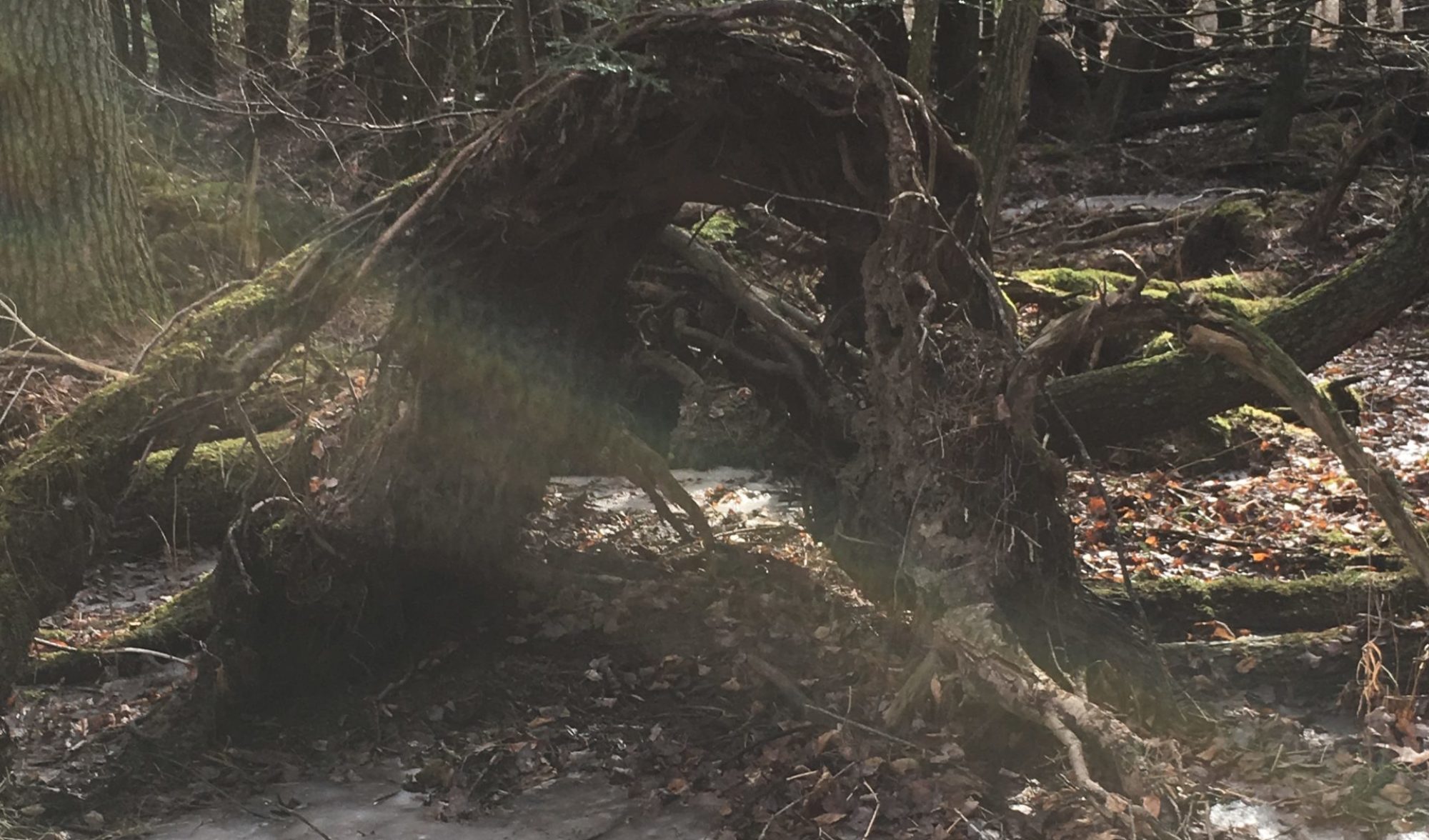
During his 1608 voyage up the Chesapeake Bay, Captain John Smith encountered the Susquehannock, an Iroquoian tribe. On his 1624 map, he inscribed a sketch with the note, “the Susquehannocks are a giant-like people and thus attired:”
On its 2016, “Albatwitch Day” webpage, The Columbia Historic Preservation Society notes:
“Also, some sources say that the Susquehannocks, like many Indian tribes, had a belief in an apelike monster, and sometimes depicted it on their war-shields.”
The founder of Albatwitch Zoological Survey had his two encounters with an Albatwitch in a riparian bog at the end of a trail that leads from the Lehigh Path noted by this nearby Pennsylvania Historical Commission marker, noting that the Susquehannocks, an Iroquoian people, travelled the Lehigh Path:

In 1828, David Cusick, an upstate New York, Iroquoian who was bilingual in both English and the Oneida dialect of the Iroquoian language published a book he described in the Preface as “Sketch of the Ancient History of the Six Nations:”
On page 7, of his book, David Cusick writes the following:
“The bad mind proceeded further in his motives and he made two images of clay in the form of mankind ; but while he was giving them existence they became apes….”
The 4th edition of “Norton Anthology of American Literature” has an entry about “The Iroquois Creation Story.” Footnote 9 to that entry notes the similar contextual use of the word “ape” by two other noteworthy Iroquoians:
“9. Cusick may have seen an ape or a depiction of apes (there are no apes native to the New World) and decided to name them as the creatures made by the Evil Twin in contrast to the humans made by the Good Twin. John Buck and Chief John Gibson, in their later renditions of the Iroquis creation narrative also refer to apes at this point in the narrative.”
John Buck, an Iroquois, was also known as Skanawadi (On One Side Of The Stream):
John Gibson, an Iroquois was also known as “Ganio’dai’io’,” (“Promoter of the Code of Handsome Lake):
Therefore, three noteworthy Iroquois used the word “ape” in their accounts of the Iroquoian Creation Story, and the Iroquoian Susquehannocks, described as “giant-like” people by Captain John Smith on his 1624 map, had an ape-like image on their shields. Despite written accounts by native, indigenous Iroquois & ape-like, war shield depictions, English and American academics summarily dismissed Iroquoian accounts of “apes” without any paleoanthropological search for scientific evidence of Northeastern ape-like creatures.
A similar “ivory tower arrogance” rooted in the white man’s, cultural imperialism towards the shared history of indigenous, aboriginal peoples surrounds the 2017 global acceptance of the discovery of Tapanuli Orangutan (Pongo tapanuliensis). For nearly a century, Sumatran native accounts of the extant, “Great Ape” species, were ignored by old-school, ivory tower academics with the ignorance just ending in 2017 when a “new breed” of post-modern, unbiased, researchers finished their extensive evidentiary labor:
“Morphometric, Behavioral, and Genomic Evidence for a New Orangutan Species”
Although it may take years during Covid-19 to gather anthropological & biological evidence, the Albatwitch Zoological Survey will introduce Albatwitch (Pan chlca sp. nov.) to the global scientific community for global acceptance as the 8th extant, non-human, “Great Ape.”
